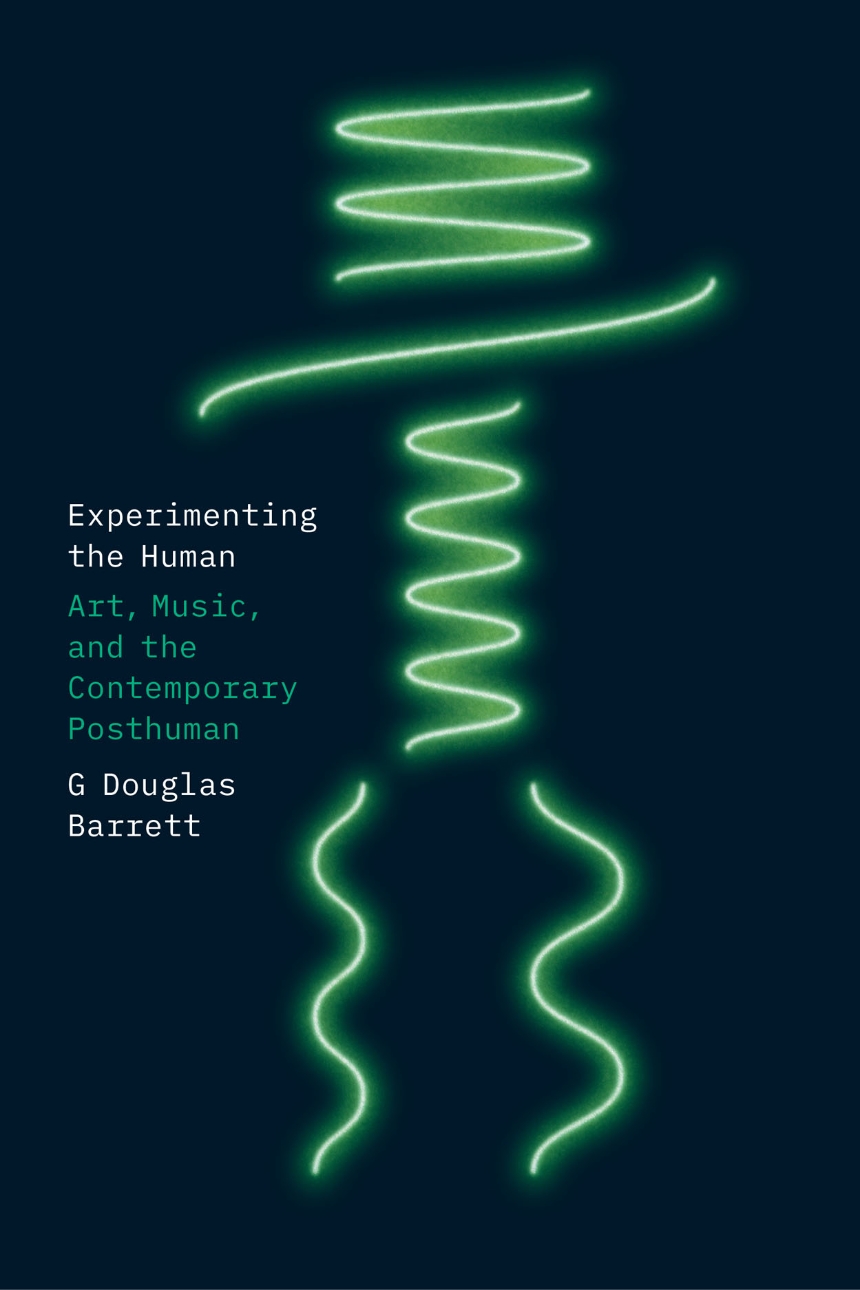Experimenting the Human
Art, Music, and the Contemporary Posthuman
9780226823409
9780226823355
9780226823393
Experimenting the Human
Art, Music, and the Contemporary Posthuman
An engaging argument about what experimental music can tell us about being human.
In Experimenting the Human, G Douglas Barrett argues that experimental music speaks to the contemporary posthuman, a condition in which science and technology decenter human agency amid the uneven temporality of postwar global capitalism. Time moves forward for some during this period, while it seems to stand still or even move backward for others. Some say we’re already posthuman, while others endure the extended consequences of never having been considered fully human in the first place. Experimental music reflects on this state, Barrett contends, through its interdisciplinary involvements in postwar science, technology, and art movements.
Rather than pursuing the human's beyond, experimental music addresses the social and technological conditions that support such a pursuit. Barrett locates this tendency of experimentalism throughout its historical entanglements with cybernetics, and in his intimate analysis of Alvin Lucier’s neurofeedback music, Pamela Z’s BodySynth performances, Nam June Paik’s musical robotics, Pauline Oliveros’s experiments with radio astronomy, and work by Laetitia Sonami, Yasunao Tone, and Jerry Hunt. Through a unique meeting of music studies, media theory, and art history, Experimenting the Human provides fresh insights into what it means to be human.
In Experimenting the Human, G Douglas Barrett argues that experimental music speaks to the contemporary posthuman, a condition in which science and technology decenter human agency amid the uneven temporality of postwar global capitalism. Time moves forward for some during this period, while it seems to stand still or even move backward for others. Some say we’re already posthuman, while others endure the extended consequences of never having been considered fully human in the first place. Experimental music reflects on this state, Barrett contends, through its interdisciplinary involvements in postwar science, technology, and art movements.
Rather than pursuing the human's beyond, experimental music addresses the social and technological conditions that support such a pursuit. Barrett locates this tendency of experimentalism throughout its historical entanglements with cybernetics, and in his intimate analysis of Alvin Lucier’s neurofeedback music, Pamela Z’s BodySynth performances, Nam June Paik’s musical robotics, Pauline Oliveros’s experiments with radio astronomy, and work by Laetitia Sonami, Yasunao Tone, and Jerry Hunt. Through a unique meeting of music studies, media theory, and art history, Experimenting the Human provides fresh insights into what it means to be human.
240 pages | 4 halftones | 6 x 9 | © 2023
Art: Art--General Studies
Music: General Music
Philosophy: Aesthetics
Reviews
Table of Contents
Introduction: Music in a Wired Brain
1. The Brain at Work: Cognitive Labor, the Posthuman Brain, and Alvin Lucier’s Music for Solo Performer
2. “How We Were Never Posthuman”: Techniques of the Posthuman Body in Pamela Z’s Voci
3. “The Catastrophe of Technology”: Posthuman Automata and Nam June Paik’s Robot K-456
4. Deep (Space) Listening: SETI, Moonbounce, and Pauline Oliveros’s Echoes from the Moon
5. Engendering the Digital: Digitality and the Posthuman Hand in Laetitia Sonami’s Lady’s Glove
6. The Last Invention: Recursion, Recordings, and Yasunao Tone’s AI Deviation
Conclusion: Music after Extinction
Acknowledgments
Notes
Index
1. The Brain at Work: Cognitive Labor, the Posthuman Brain, and Alvin Lucier’s Music for Solo Performer
2. “How We Were Never Posthuman”: Techniques of the Posthuman Body in Pamela Z’s Voci
3. “The Catastrophe of Technology”: Posthuman Automata and Nam June Paik’s Robot K-456
4. Deep (Space) Listening: SETI, Moonbounce, and Pauline Oliveros’s Echoes from the Moon
5. Engendering the Digital: Digitality and the Posthuman Hand in Laetitia Sonami’s Lady’s Glove
6. The Last Invention: Recursion, Recordings, and Yasunao Tone’s AI Deviation
Conclusion: Music after Extinction
Acknowledgments
Notes
Index
